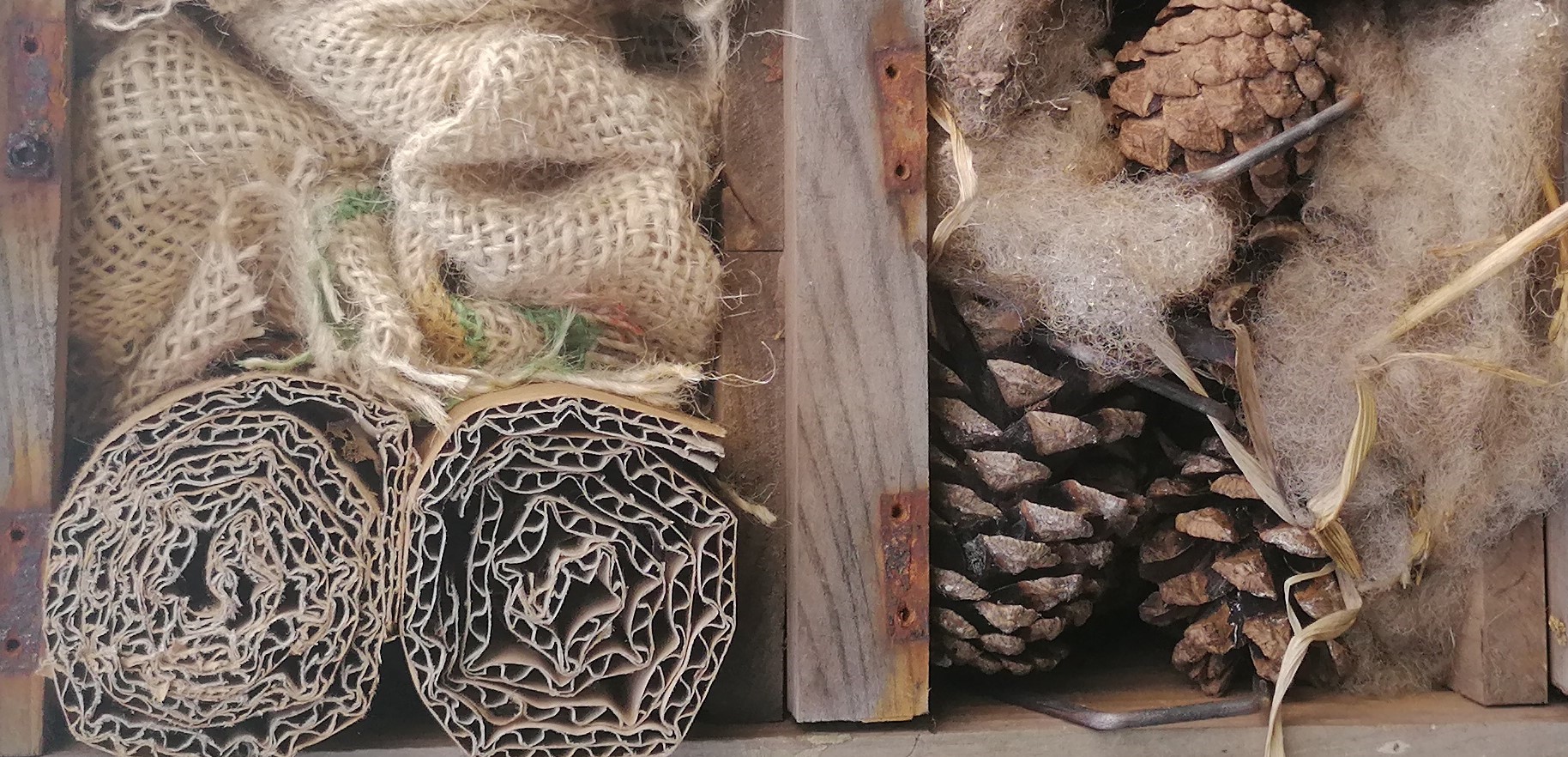How gardeners can recycle better in the New Year
Experts offer tips on how to put Christmas waste and packaging to good use and help the environment in 2023
It’s time for all of us to green up our act and do our bit for the environment, say gardening experts Gareth Richards and Holly Farrell.
“Doing something positive for the environment isn’t just about donating to rainforest charities or campaigning to end the ivory trade. You can make a difference outside your back door,” they write in their new book, Do Bees Need Weeds? published in association with the RHS.

“There are so many ways to make a difference. From re-using cardboard packaging as a weed-suppressing mulch to growing your own veg from seed, gardens are a great place to give something back to nature.
“Soothing for the mind, body and the soul, not to mention the wallet, there’s never been a better time to go ‘green’ in the garden,” they say.
The charity Garden Organic (gardenorganic.org.uk) is also urging households to put Christmas packaging and waste to good use to benefit our gardens.
According to Recycle Now (recyclenow.com), a staggering 300,000 tonnes of card is used in UK households during the festive season.
The charity’s head gardener Emma O’Neill, says: “For the environmentally-aware consumer, cardboard ticks all the boxes. It’s renewable, recyclable, reusable and biodegradable. But instead of filling your recycling bin to overflowing, it can be put to excellent use in your garden.”
Recycle cardboard

Use cardboard boxes to suppress weeds
Regular cardboard can be spread over bare soil to protect it against winter rains, to suppress weeds and even to curl up inside pots to create insect shelters, she suggests.
“Please be aware, however, that some cardboard is specially treated with a shiny plastic laminate which makes it much harder to break down so avoid using these on your compost heap or mulch. Also, ensure you take off all the plastic sealing tape from the boxes as that does not biodegrade,” O’Neill advises.
If your New Year’s resolution is to help the environment, Richards and Farrell offer these six top tips for sustainable and eco-friendly gardening.
1. Get composting
Christmas – with its inevitable surfeit of food – can often mean bulging bins full of food waste, which is terrible news for the environment. However, you can easily make your own organic compost and plant food, whatever size of garden you have.
There are many ways to do this, including ‘bokashi bins’ which use friendly bacteria to break down any kind of food (including meat and dairy waste). Whether it’s a balcony wormery to a traditional garden compost heap, however, you do it your plants (and the planet) will thank you.
2. Make a new pond
Any water in the garden is brilliant for helping wildlife, as well as an attractive feature and a chance to grow different plants. Small ponds can easily be made without using a plastic or fibreglass liner – any watertight container will do, such as an old bucket or bath – and can be sunk in the ground or kept proud of it.
Just be sure that there is a ramp from inside the pond so that amphibians, hedgehogs and the like can get out easily. Larger ponds can be made from puddled clay, or use the thickest, longest-lasting butyl liner possible.
3. Re-use plastic pots
Plant suppliers are increasingly using biodegradable or recyclable pots, but what to do with the stock of black plastic ones in the shed? Throwing away perfectly usable pots, whatever they are made of, makes no environmental sense.
A better option is to use everything, plastic pots included, until it is at the end of its life, and then replace it if necessary with a more environmentally-friendly alternative.
Broken plastic pots can now be recycled at most large garden centres. If you don’t need them, perhaps a community or school garden has a use for them?
4. Use water sustainably
View this post on Instagram
A simple change or two can make big steps towards water sustainability. First, install a water butt. Rainwater is better for plants than tap water anyway and it will save on water bills. Most water butts tend to be made of plastic, so why not get a water-butt diverter (to adapt the downpipe) and repurpose an old barrel?
5. Grow your own

Eating a plant-based diet is one of the best ways to reduce your carbon footprint, so grow your own veg. Even in the depths of winter you can grow microgreens indoors on your windowsill for quick crops of tasty, nutritious leaves – try radish, beetroot or coriander.
6. Enlist nature to help with pest control

Bug sprays that kill garden pests such as aphids are environmentally damaging and kill other insects such as bees. By planting flowers that attract aphid-eating wildlife, such as hoverflies and ladybirds, nature will do the job for you.
Daisy-type flowers such as marigolds (calendula) and flat-topped flowers such as yarrow and fennel are all popular with beneficial insects. Blue tits are also fond of aphids – a bird feeder and other seed plants (they also love fennel) will encourage them to your garden year-round.
Do Bees Need Weeds? A Gardener’s Collection of Handy Hints For Greener Gardening by Gareth Richards and Holly Farrell is published by Mitchell Beazley in association with the RHS. Available from Amazon for £11.50
The Press Association
Latest posts by The Press Association (see all)
- 5 new books to read this week - November 23, 2024
- 3 easy Mary Berry recipes to make this season - November 22, 2024
- In Pictures: Party stalwart kept New Labour in touch with traditional supporters - November 21, 2024
- 6 easy indoor exercises to try this winter – and why they are good for you - November 19, 2024
- Martin Clunes: I can’t afford to retire – I’ve got too many horses - November 19, 2024





















